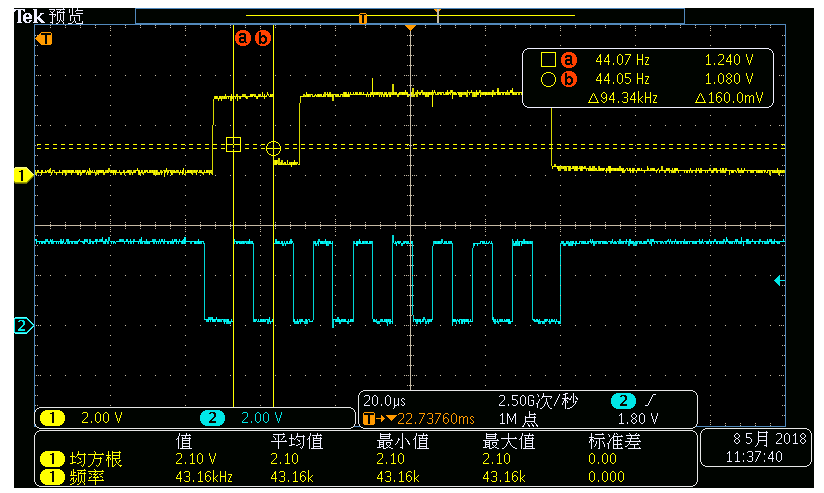Hi
The right data should be 0x10000110, but actually it's 0x10111111, false data start from the 3rd bit.
a. It's working well when data rate is below 78KHz.
b. 100KHz, it appear above false long 1 data. Sometimes , it start from the 1st bit, sometimes start from one middle bit.
c. 100KHz, it's working well if running CC2541 peripherals I2C example, which has no BLE function.
Is it caused by BLE priority? We set BLE interruption priority higher than I2C. Thanks.


